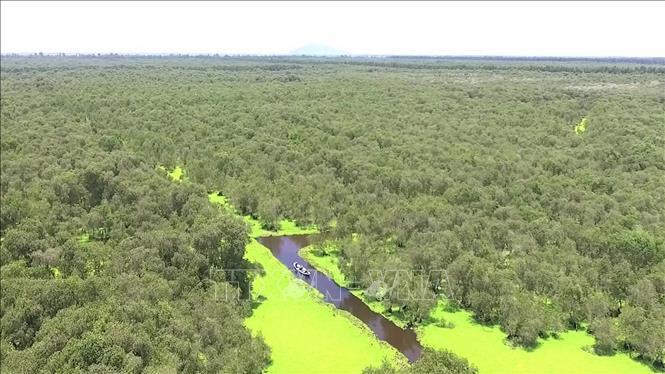Important natural ecosystems such as terrestrial primary forests, mangroves, coral reefs, sea grass beds, inland and coastal wetlands all have all been narrowed in area and composition, and the quality of biomes in these ecosystems has degraded.

Vietnam had 14.3 million hectares of natural forests in 1943, with coverage of 43.8 percent, while the figure dropped to 10.88 million in 1999. The causes were rapid population growth, fire-fallow cultivation, reclamation of land for industrial crops such as coffee, tea and rubber, and forest exploitation to get timber for export.
The total area of mangrove forests dropped from 400,000 hectares in 1943 to 155,000 hectares, of which primary forest accounts for a very small proportion. The area of coral reefs (not including ones on Hoang Sa and Truong Sa archipelagos) fell from 110,000 hectares in 2001 to 14,000 hectares in 2010.
The number of species listed in the Red Book is considered an indicator of biodiversity degradation. The number of the listed species increased by 1.5 times between 1992 and 2007, after two investigation campaigns.
| Thirty seven plant species have been listed as extremely endangered, and 178 as endangered species. As for animals, four species are extinct, five species extinct in the wild, 48 species listed as extremely endangered and 113 endangered. |
Thirty seven plant species have been listed as extremely endangered, and 178 as endangered species. As for animals, four species are extinct, five species extinct in the wild, 48 species listed as extremely endangered and 113 endangered.
Scientists have warned of the loss of a high number of animal and plant varieties cultivated for agricultural, forestry, fishery and medical production, including precious indigenous varieties.
The number of rice varieties decreased from 156 to 75 between 1997 and 2006.
Besides human causes, climate change and extreme weather are also important reasons behind biodiversity degradation.
Climate change may increase the pressure to destroy rare species, cause changes to marine ecosystems, submerge some islands and coastal strips, and change the distribution areas of some species ‘sensitive’ to weather conditions such as temperature, rainfall, drought and flood.
The national strategy on biodiversity protection by 2030 mentioned five major tasks, including conserving natural ecosystems; conserving wild species, endangered precious and rare animal and plant varieties; using ecosystems and biodiversity in a reasonable way and applying a reasonable benefit sharing mechanism; controlling factors that may cause negative impact on biodiversity; and conserving biodiversity in the context of climate change.
Tu Linh

Vietnam urged to take prompt action to protect biodiversity
Biodiversity in Vietnam is facing serious challenges, especially in the context of climate change.

Changing behaviour towards nature to keep biodiversity
Professor Truong Quang Hoc from Vietnam National University’s Centre for Natural Resources and Environment Studies spoke about the impacts that Vietnam will possibly have in case of biodiversity decline.
 Dr Nguyen Ngoc Lung, Director of the Institute for Sustainable Forest Management and Forest Certification, explains that biodiversity degradation can be seen in three forms - biodiversity of ecosystems; of species; and genetic biodiversity.
Dr Nguyen Ngoc Lung, Director of the Institute for Sustainable Forest Management and Forest Certification, explains that biodiversity degradation can be seen in three forms - biodiversity of ecosystems; of species; and genetic biodiversity.